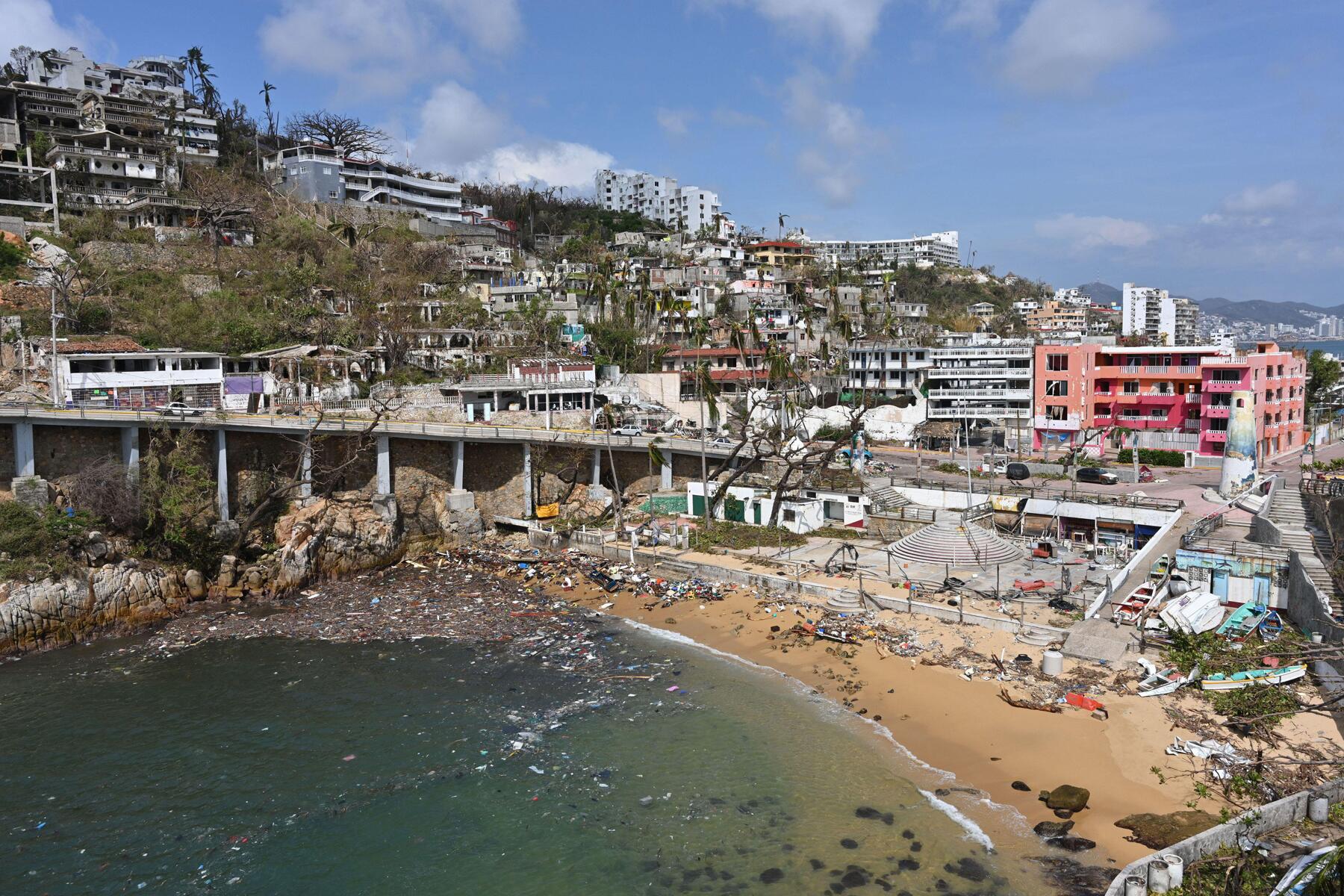Acapulco was especially hard hit by the storm.
Hurricane Otis, the second Category 5 hurricane tracked in the Pacific Ocean this year, made landfall near Acapulco on October 25 with winds up to 165 miles per hour—the first tracked hurricane in the Pacific to make landfall at Category 5 intensity.
Acapulco was especially hard hit by the storm. Until just before landfall, the storm was forecast to be a weak tropical storm. The hurricane rapidly strengthened in a process that meteorologists call explosive intensification, catching many residents off guard.
The official death toll from the storm is 48, with almost as many still unaccounted for. Some residents affected by the storm grumbled that the State of Guerrero’s emergency services focused on the tourist-focused areas of the city.
Acapulco’s International Airport is closed, except for charter flights transporting evacuating tourists to Mexico City. American Airlines and United Airlines, the two U.S. carriers serving Acapulco, have issued travel waivers for passengers wishing to rebook their travel to a later date.
The U.S. State Department has closed its consular office in Acapulco until further notice. U.S. citizens in Acapulco in need of consular services are instructed to contact the embassy in Mexico City for assistance. The embassy has also published a list of shelters available in the city. U.S. citizens who wish to evacuate Acapulco should contact the U.S. Embassy for assistance booking a seat on an evacuation flight or bus to Mexico City.
Recommended Fodor’s Video
Local officials report that the main tourist strip in Acapulco had been cleared of debris as of Sunday, but the British Foreign Office advises against all but essential travel to the city (the U.S. and Canadian governments advised against travel to Acapulco before the hurricane).
Acapulco, famously popular as a glamorous resort destination since the 1960s, had declined in popularity with international visitors since the 1990s due to cartel-related crime, violence, and kidnappings. However, it remained popular with Mexican and some European vacationers. Even before the hurricane, the U.S. State Department advised against travel to the state, prohibiting U.S. government employees from traveling to Guerrero, even to the resort areas of Acapulco, Zihuatanejo, and Ixtapa. The Government of Canada also advises against travel to Guerrero, but excludes Ixtapa/Zihuatanejo.
Some cruise lines still call at Acapulco, although there are no ships scheduled until early November. Ships from Norwegian and Oceania Cruises are scheduled to visit Acapulco in early November, but cruise lines may skip the port or find an alternative should the city not be ready for visitors by that time.
The British Foreign Office reports widespread damage from Acapulco north to Zihuatanejo, noting that there have been reports of looting and robbery given scarce supplies of food and water. Mexican President Andrés Manuel López Obrador has ordered the National Guard to the state to set up checkpoints in Acapulco and surrounding areas to deter looting. The Foreign Office also notes that further flash floods and mudslides following the immense amount of rain dumped on the region are possible, that electric lines remain down, and some buildings may not be structurally sound.
Acapulco is the only large community with tourist traffic to be affected by Hurricane Otis. Ixtapa-Zihuatanejo Airport is open to normal flight activity, and resorts in the Ixtapa-Zihuatanejo corridor are open for visitors, but travelers should contact their resorts for a status update prior to departing.
Before Hurricane Otis, the most recent update to the U.S. State Departments travel warnings for Mexico was on August 22. The State Department rates the following Mexican states, in addition to Guerrero, as Level 4 – Do Not Travel: Colima, Michoacan, Sinaloa, Tamaulipas, and Zacatecas. Level 4 is the highest travel advisory, issued for greater likelihood of life-threatening risks. U.S. government officials may have very limited ability to assist citizens in these states in cases of emergency, and advises U.S. citizens not to travel, or to leave as soon as it is safe to do so.




